Effect of Axial Clearance Variation on Dual-Rotor Flowmeter Performance
Abstract
:1. Introduction
2. Numeric Simulation Scheme
2.1. Geometry Description
2.2. Goveneration Equations
2.3. Gird Generation and Grid Independence Test
2.4. Flowmeter Performance Indicators
2.5. Entropy Theory
2.6. Numerical Calculation Strategy
3. Experimental Results and Simulation Verification
4. Result and Discussion
4.1. Comparative Analysis of Performance Characteristics
4.2. Comparative Analysis of Internal Flow Characteristics
4.3. Comparative Analysis of Energy Loss Based on Entropy Production Theory
5. Conclusions
Author Contributions
Funding
Institutional Review Board Statement
Informed Consent Statement
Data Availability Statement
Conflicts of Interest
References
- Ma, J.; Chang, J.; Zhang, J.; Bao, W.; Yu, D. Control-oriented unsteady one-dimensional model for a hydrocarbon regeneratively-cooled scramjet engine. Aerosp. Sci. Technol. 2018, 85, 158–170. [Google Scholar] [CrossRef]
- Bao, W.; Li, X.; Qin, J.; Zhou, W.; Yu, D. Efficient utilization of heat sink of hydrocarbon fuel for regeneratively cooled scramjet. Appl. Therm. Eng. 2011, 33–34, 208–218. [Google Scholar] [CrossRef]
- Yuan, Y.; Zhang, T. Research on the dynamic characteristics of a turbine flow meter. Flow Meas. Instrum. 2017, 55, 59–66. [Google Scholar] [CrossRef]
- Yoder, J. Flowmeter Spin: History and evolution of turbine flow measurement. Flow Control 2012, 26–30. Available online: https://www.piprocessinstrumentation.com/instrumentation/flow-measurement/turbine/article/15555993/flowmeter-spin (accessed on 3 July 2024).
- Tegtmeier, C. CFD Analysis of Viscosity Effects on Turbine Flow Meter Performance and Calibration. Master’s Thesis, University of Tennessee, Knoxville, TN, USA, 2015. [Google Scholar]
- Lee, W.; Evans, H. Density effect and Reynolds number effect on gas turbine flowmeters. J. Basic Eng. 1965, 87, 413–420. [Google Scholar] [CrossRef]
- Lee, W.; Karlby, H. A study of viscosity effect and its compensation on turbine-type flowmeters. J. Basic Eng. 1965, 87, 1043–1051. [Google Scholar] [CrossRef]
- Rubin, M.; Miller, R.; Fox, W. Driving torques in a theoretical model of a turbine meter. J. Basic Eng. 1965, 87, 413–420. [Google Scholar] [CrossRef]
- Thompson, R.E.; Grey, J. Turbine flowmeter performance model. J. Basic Eng. 1970, 92, 712–722. [Google Scholar] [CrossRef]
- Wang, L.; Xiao, F.; Li, T.; Zhu, Y.; Yang, J.; Li, J.; Ma, S. Investigation of Turbine Flowmeter Response in Vertical Air-water Two-phase Flow. In Proceedings of the 16th International Flow Measurement Conference, Paris, France, 24–26 September 2013. [Google Scholar]
- Wang, L.; Zhao, H.; Ming, X.; Yang, J.; Li, J.; Guan, S. An investigation on the behaviours of a turbine flowmeter under low flow rate condition. In Proceedings of the 2011 9th World Congress on Intelligent Control and Automation, Taipei, Taiwan, 21–25 June 2011; pp. 285–290. [Google Scholar]
- Lavante, E.; Banaszak, U.; Kettner, T. Numerical simulation of Reynolds number effects in a turbine flow meter. In Proceedings of the 12th International Conference on Flow Measurement, Guilin, China, 14–17 September 2004; pp. 575–582. [Google Scholar]
- Lavante, E.; Kettner, T.; Lazaroski, N. Numerical simulation of unsteady three-dimensional flow fields in a turbine flow meter. In Proceedings of the 11th International Conference on Flow Measurement, Groningen, The Netherlands, 12–14 May 2003. [Google Scholar]
- Zhao, X.; Chen, K.; Hu, P. The numerical analysis of variational finite element for flow field in the rotor of turbine flowmeter and turbine performance curve (part one). In Proceedings of the 2nd Flow Measurement Conference, London, UK, 11–13 May 1988; Volume 1, pp. 91–102. [Google Scholar]
- Stoltenkamp, P.W. Dynamics of Turbine Flow Meters. Ph.D. Thesis, Technische Universiteit Eindhoven, Eindhoven, Switzerland, 2007. [Google Scholar]
- Chen, Y.; Zhang, H.; Ma, S. Research on the characteristics of internal turbine sensor mounted on underwater high speed moving body. In Proceedings of the 2015 IEEE International Instrumentation and Measurement Technology Conference (I2MTC) Proceedings, Pisa, Italy, 11–14 May 2015; pp. 1337–1341. [Google Scholar]
- Merzkirch, W.; Gersten, K.; Peters, F.; Vasanta Ram, V.; von Lavante, E.; Hans, V.; von Lavante, E. Investigation of unsteady three-dimensional flow fields in a turbine flow meter. In Fluid Mechanics of Flow Metering; Springer: Berlin/Heidelberg, Germany, 2005; pp. 185–200. [Google Scholar]
- Saboohi, Z.; Sorkhkhah, S.; Shakeri, H. Developing a model for prediction of helical turbine flowmeter performance using CFD. Flow Meas. Instrum. 2015, 42, 47–57. [Google Scholar] [CrossRef]
- Lee, W.; Blakeslee, D.; White, R. A self-correcting and self-checking gas turbine meter. J. Fluids Eng. 1982, 104, 143–149. [Google Scholar] [CrossRef]
- Zhaopeng, W. Fuel flow Calculation Method and Validation using Dual-rotor Turbine Flowmeter. Sci. Technol. Eng. 2011, 33, 8379–8382. [Google Scholar]
- Pope, J.G.; Wright, J.D.; Johnson, A.N.; Moldover, M.R. Extended Lee model for the turbine meter & calibrations with surrogate fluids. Flow Meas. Instrum. 2012, 24, 71–82. [Google Scholar]
- Ren, Z.; Zhou, W.; Li, D. Investigation on pressure fluctuations of dual-and analogical single-rotor turbine flowmeters. Proc. Inst. Mech. Eng. Part C J. Mech. Eng. Sci. 2022, 236, 7166–7178. [Google Scholar] [CrossRef]
- Ren, Z.; Zhou, W.; Li, D. Response and flow characteristics of a dual-rotor turbine flowmeter. Flow Meas. Instrum. 2022, 83, 102120. [Google Scholar] [CrossRef]
- Menter, F.R.; Kuntz, M.; Langtry, R. Ten years of industrial experience with the SST turbulence model. Turbul. Heat Mass Transf. 2003, 4, 625–632. [Google Scholar]
- Kock, F.; Herwig, H. Local entropy production in turbulent shear flows: A high-Reynolds number model with wall functions. Int. J. Heat Mass Transf. 2004, 47, 2205–2215. [Google Scholar] [CrossRef]
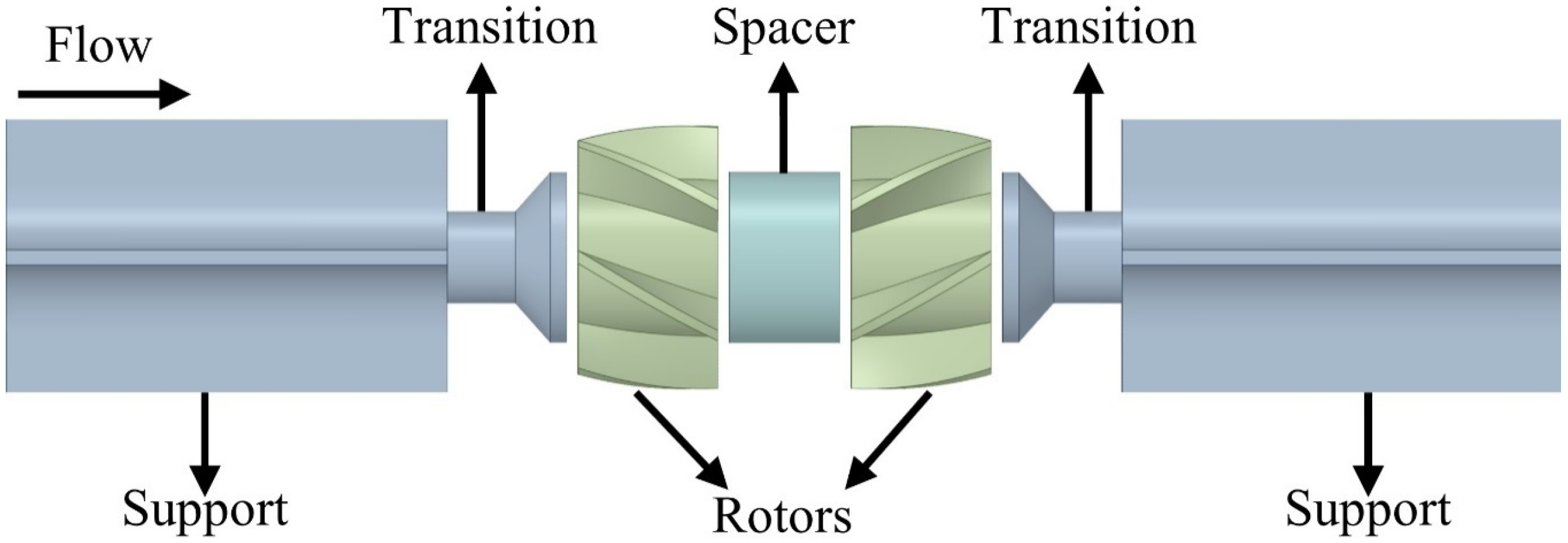



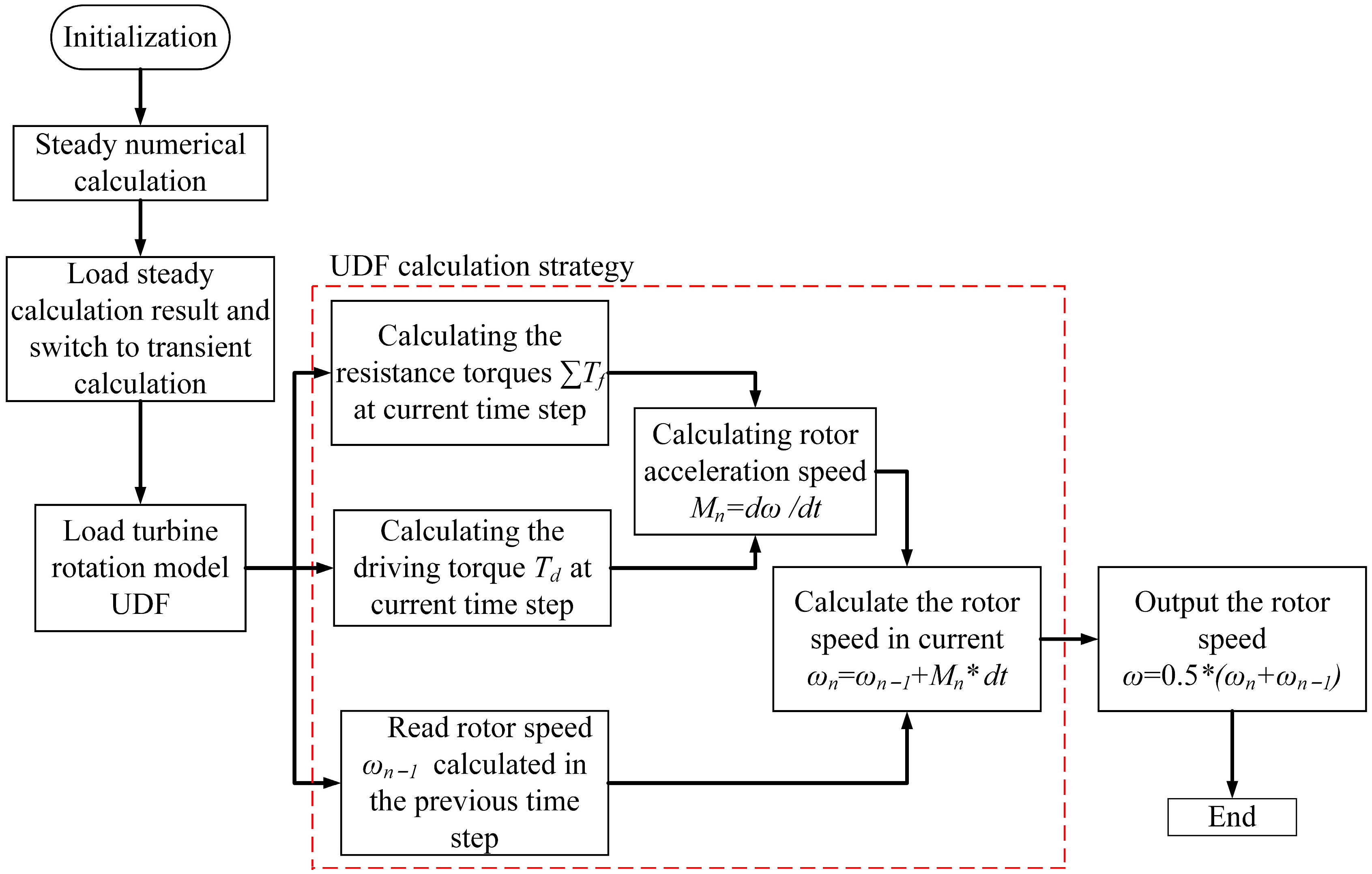
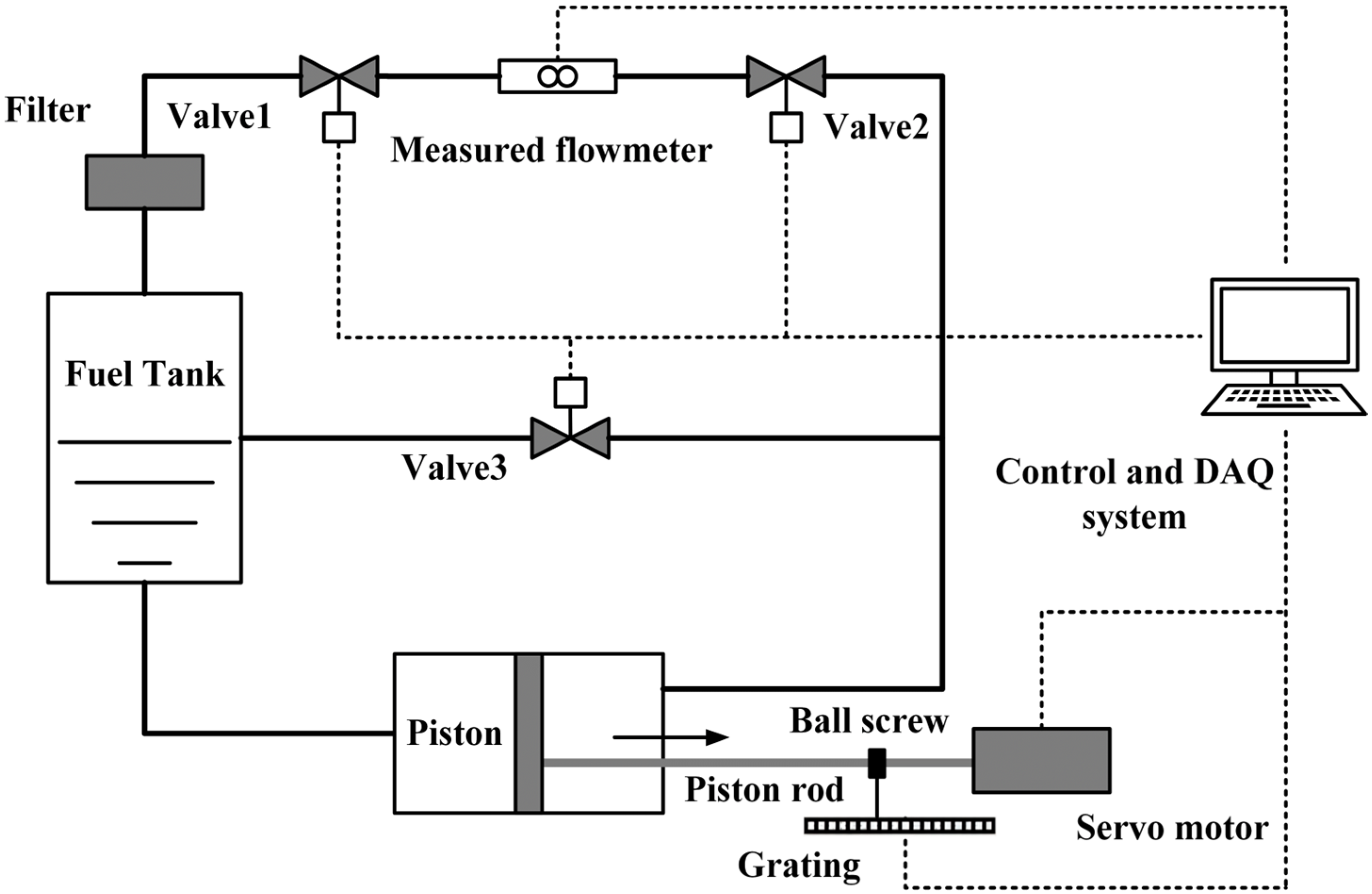
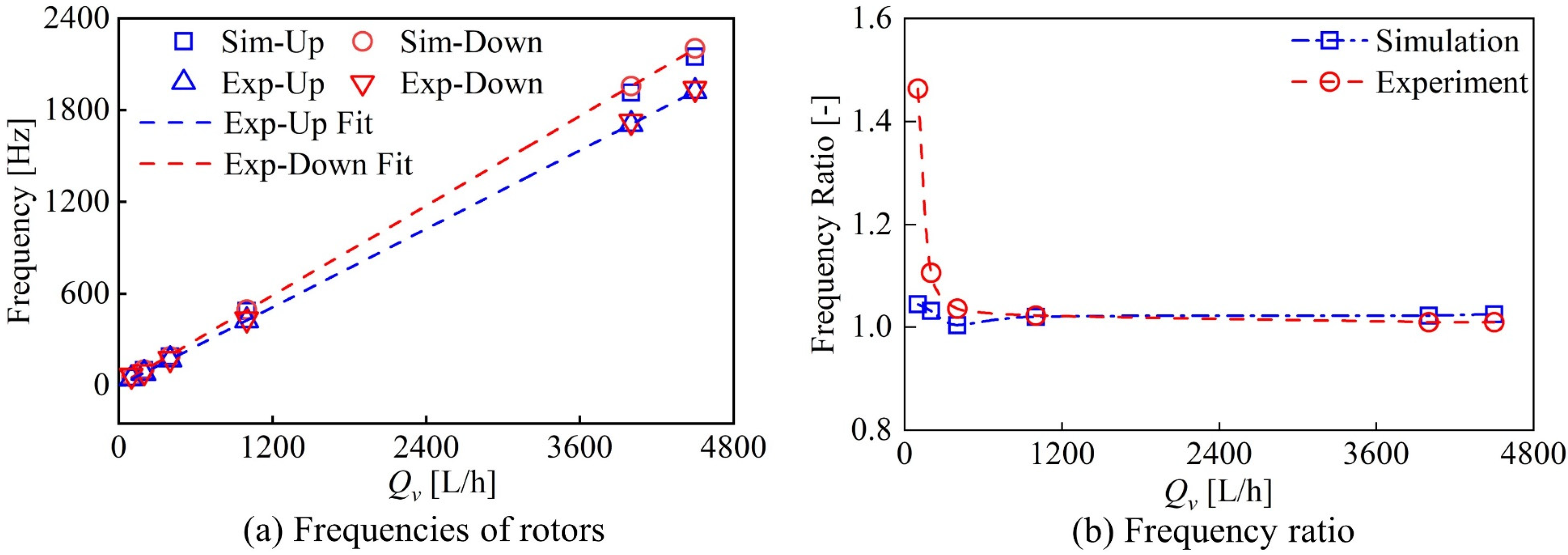
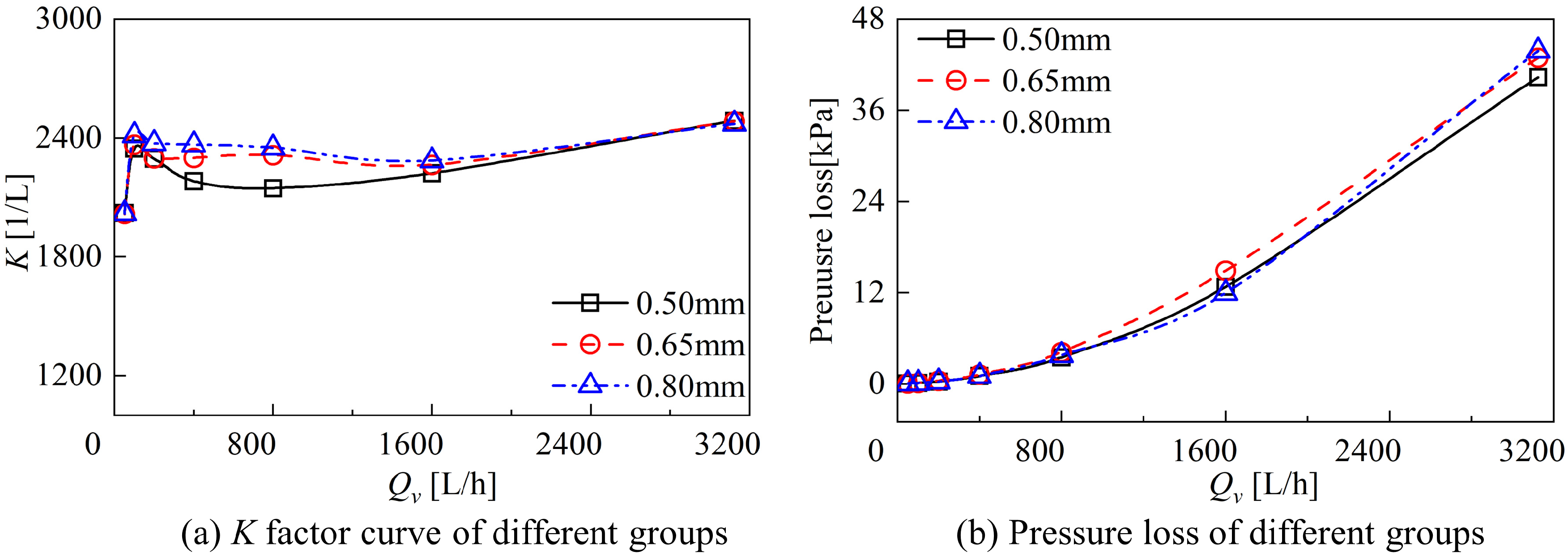


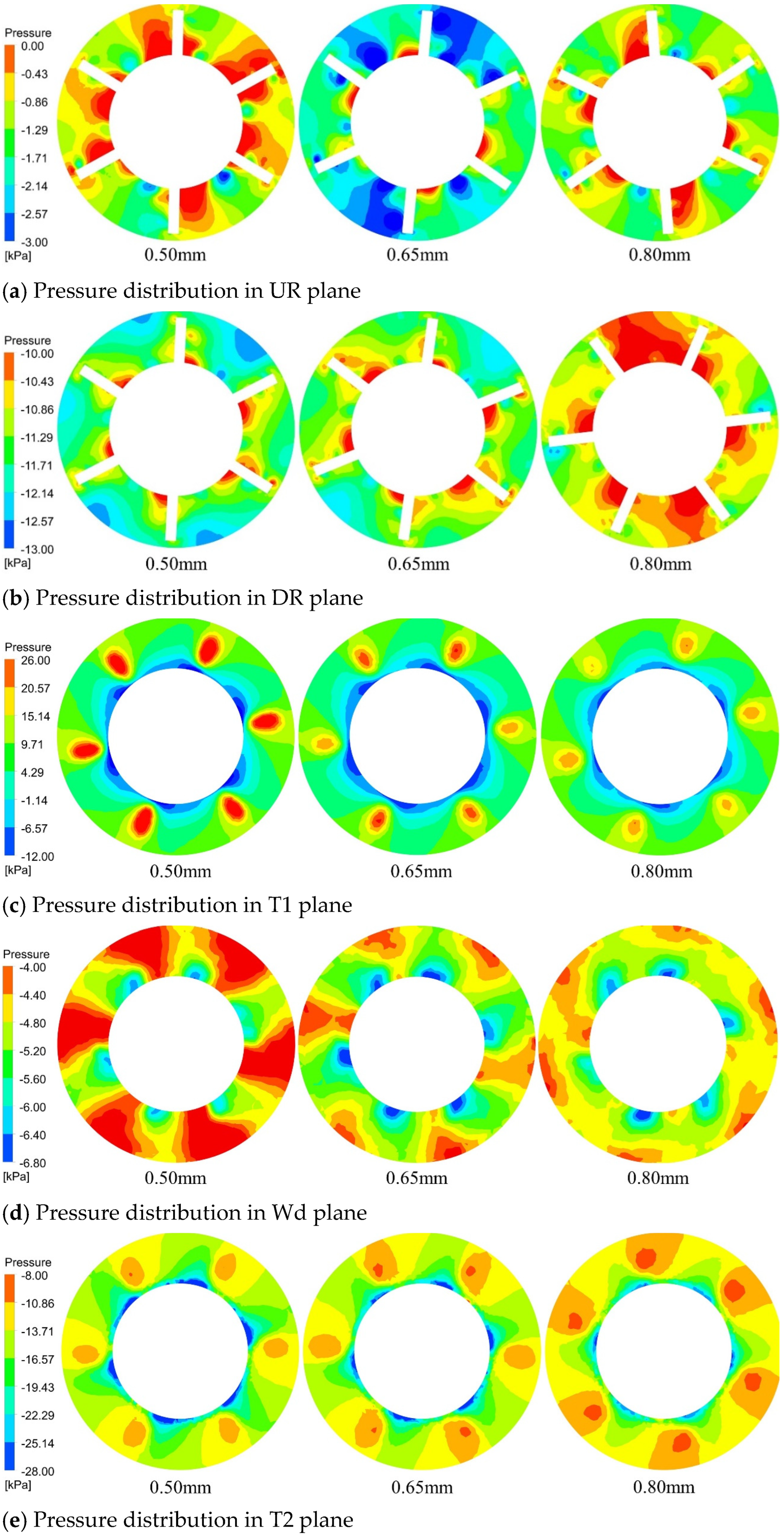
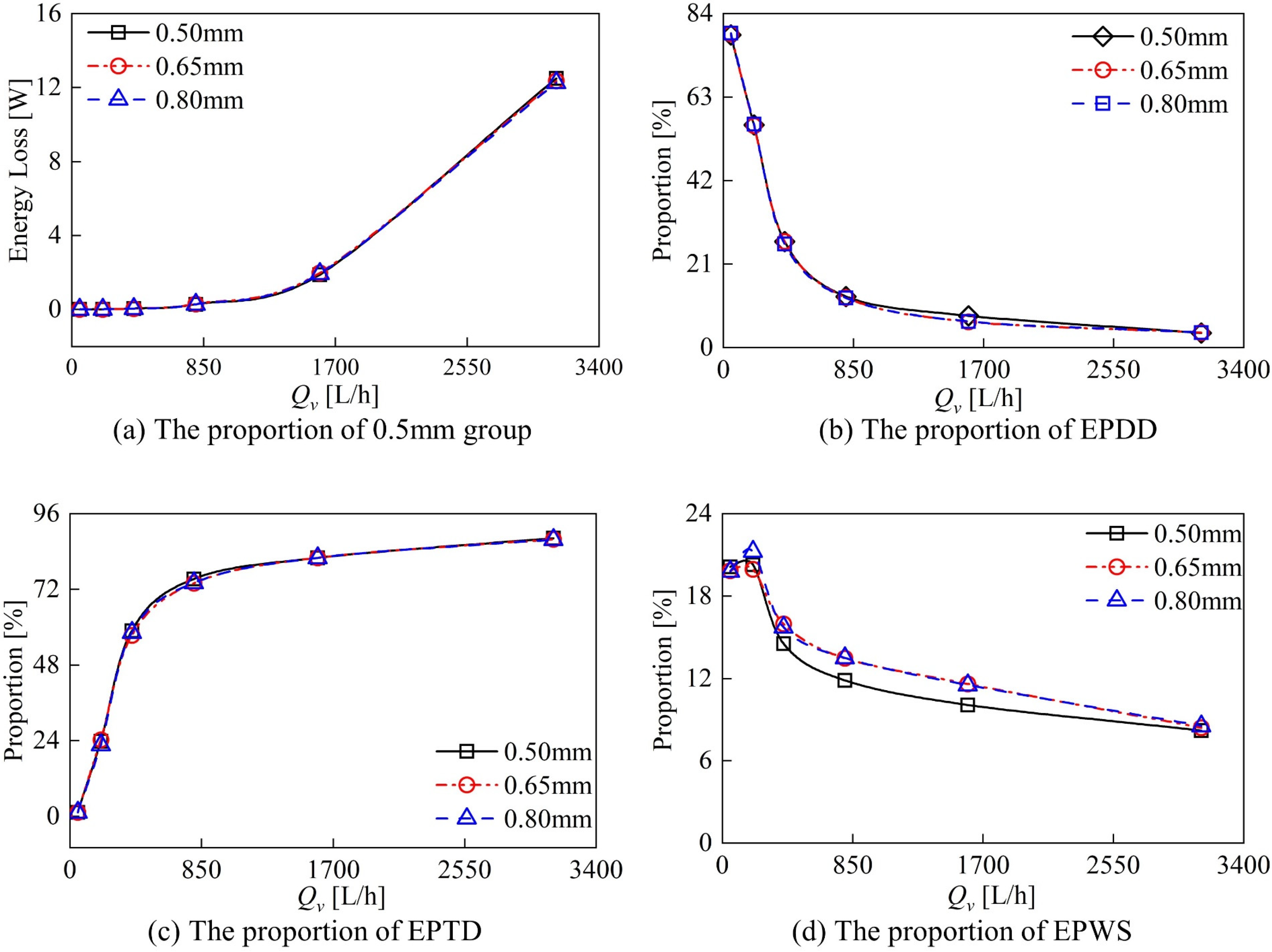

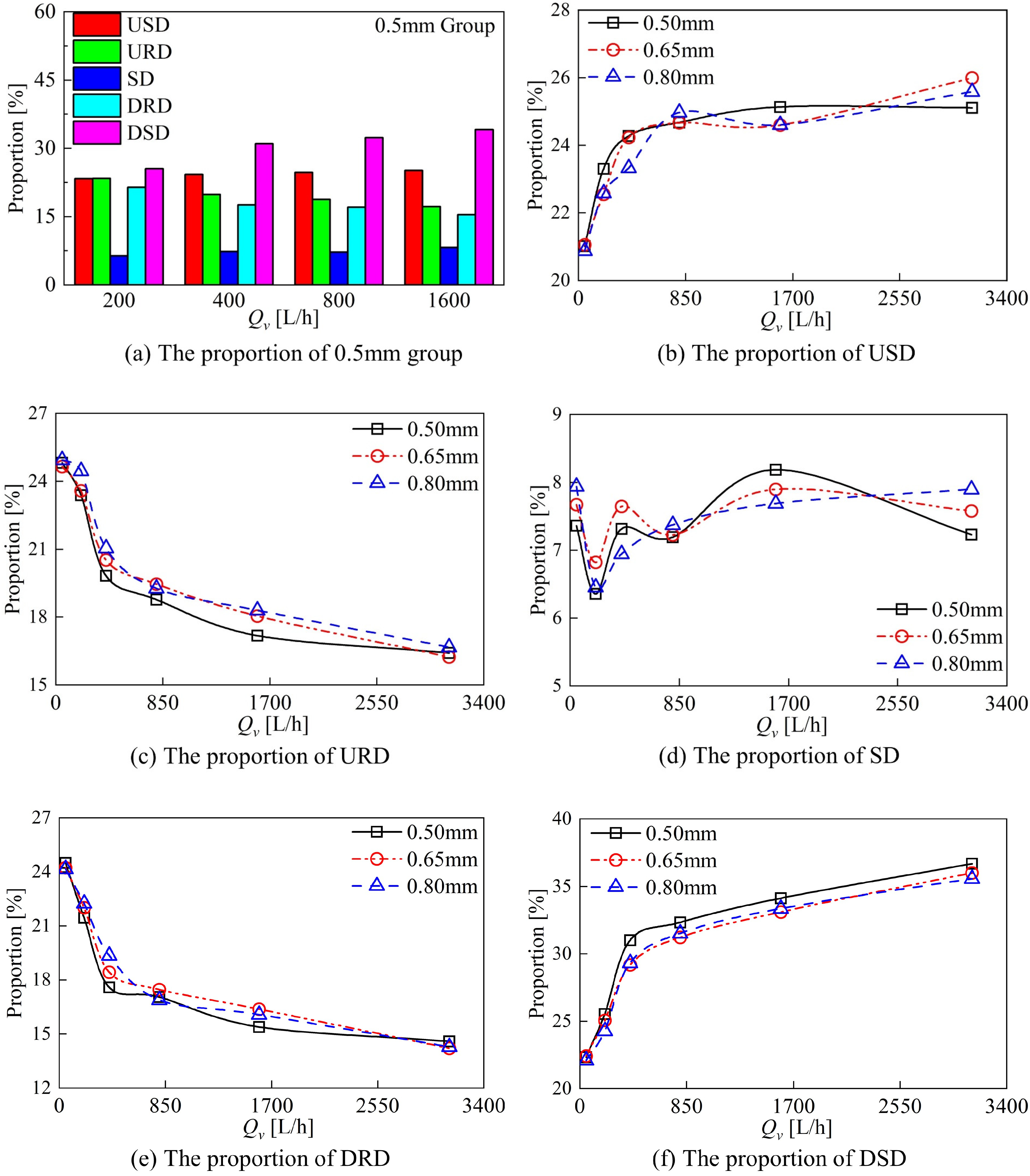
| Group | K Factors (1/L) | Average K Factor | Linearity E | |||
|---|---|---|---|---|---|---|
| 200 L/h | 400 L/h | 800 L/h | 1600 L/h | |||
| 0.50 mm | 2294.48 | 2181.35 | 2146.37 | 2220.69 | 2210.72 | 3.33% |
| 0.65 mm | 2297.03 | 2298.82 | 2313.66 | 2264.49 | 2293.50 | 1.07% |
| 0.80 mm | 2373.32 | 2365.50 | 2351.06 | 2285.14 | 2343.75 | 1.98% |
| Group | Pressure Loss (kPa) | ||||
|---|---|---|---|---|---|
| 200 L/h | 400 L/h | 800 L/h | 1600 L/h | 3100 L/h | |
| 0.50 mm | 0.291 | 1.018 | 3.494 | 12.724 | 40.336 |
| 0.65 mm | 0.365 | 1.196 | 4.138 | 12.910 | 42.918 |
| 0.80 mm | 0.304 | 1.050 | 3.782 | 11.945 | 43.798 |
| Group | Energy Loss (W) | ||||
|---|---|---|---|---|---|
| 200 L/h | 400 L/h | 800 L/h | 1600 L/h | 3100 L/h | |
| 0.50 mm | 0.0052 | 0.0398 | 0.2823 | 1.8851 | 12.4907 |
| 0.65 mm | 0.0055 | 0.0406 | 0.2878 | 1.9678 | 12.3527 |
| 0.80 mm | 0.0054 | 0.0409 | 0.2788 | 1.9262 | 12.2615 |
Disclaimer/Publisher’s Note: The statements, opinions and data contained in all publications are solely those of the individual author(s) and contributor(s) and not of MDPI and/or the editor(s). MDPI and/or the editor(s) disclaim responsibility for any injury to people or property resulting from any ideas, methods, instructions or products referred to in the content. |
© 2024 by the authors. Licensee MDPI, Basel, Switzerland. This article is an open access article distributed under the terms and conditions of the Creative Commons Attribution (CC BY) license (https://creativecommons.org/licenses/by/4.0/).
Share and Cite
Huang, F.; Yan, L.; Monsia, C.C.; Han, Y.; Liu, J.; Zan, H. Effect of Axial Clearance Variation on Dual-Rotor Flowmeter Performance. Sensors 2024, 24, 4389. https://doi.org/10.3390/s24134389
Huang F, Yan L, Monsia CC, Han Y, Liu J, Zan H. Effect of Axial Clearance Variation on Dual-Rotor Flowmeter Performance. Sensors. 2024; 24(13):4389. https://doi.org/10.3390/s24134389
Chicago/Turabian StyleHuang, Fuji, Liang Yan, Chabi Christian Monsia, Yuxiang Han, Jiabao Liu, and Hao Zan. 2024. "Effect of Axial Clearance Variation on Dual-Rotor Flowmeter Performance" Sensors 24, no. 13: 4389. https://doi.org/10.3390/s24134389





